Welcome to the beautiful province of Phang Nga! Phang Nga is home to a variety of bird species, from migratory shorebirds to colorful tropical species.
With its diverse habitats, including mangroves, rainforests, and limestone cliffs, Phang Nga is a birdwatchers’ paradise. Whether you’re visiting for the day or a longer stay, you’re sure to spot some of the many species that call this area home.
From the great hornbill and the black-capped kingfisher to the white-throated kingfisher and the common tailorbird, you’re sure to find plenty of feathered friends to admire.
1. White-Bellied Sea Eagle
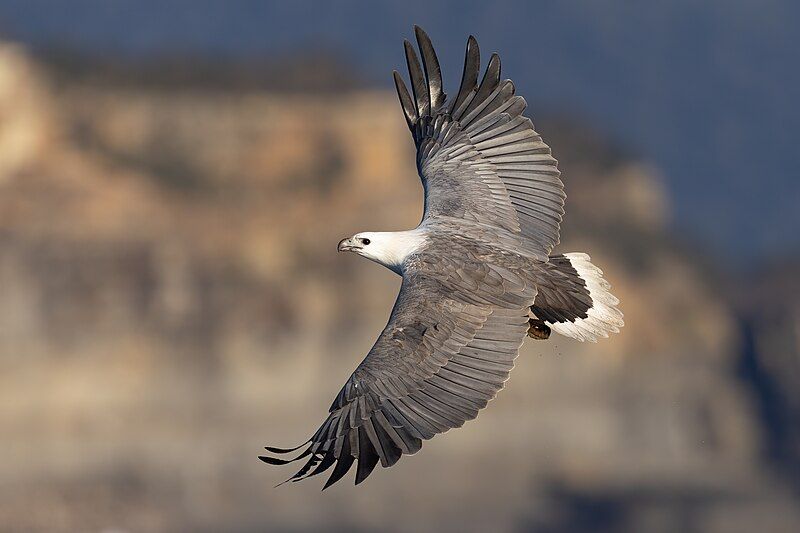
The white-bellied sea eagle is a magnificent diurnal bird of prey belonging to the Accipitridae family. It is native to various parts of India, the Middle East, and Southeast Asia. It is a large bird with a wingspan of up to 1.6 meters and a body length of about 0.9 meters.
The white-bellied sea eagle is easily identified by its white breast and belly, and its distinctive black wings and tail. It has yellow legs and feet, as well as a yellow cere and bill. The white-bellied sea eagle was first described by Johann Friedrich Gmelin in 1788.
It is closely related to Sanford’s sea eagle, which is native to the Solomon Islands. Because of their close relationship, the two species are generally considered superspecies. The white-bellied sea eagle is a powerful hunter, feeding mainly on fish, birds, and small mammals.
It hunts by soaring high above the ground and diving to snatch its prey. The white-bellied sea eagle is also a scavenger, taking advantage of carrion when available. In addition to its impressive hunting skills, the white-bellied sea eagle also has strong social bonds.
They form lifelong pairs and often nest together in trees or on cliff ledges. They have a loud, shrill call and may be seen in groups around food sources. The white-bellied sea eagle is an awe-inspiring creature, and its beauty and strength make it a symbol of power and majesty.
It is a species of conservation concern due to habitat loss and other threats, and it is important to protect this majestic bird from further decline.
| Kingdom | Animalia |
| Phylum | Chordata |
| Class | Aves |
| Order | Accipitriformes |
| Family | Accipitridae |
| Genus | Icthyophaga |
| Species | I. leucogaster |
2. Lesser Sand Plover

The Siberian sand plover is a species of wading bird belonging to the plover family. This species is closely related to the Tibetan sand plover, and until recently the two species were lumped together and referred to as the lesser sand plover.
However, a recent re-evaluation by the International Ornithologists’ Union has resulted in the two species being split apart and the Tibetan sand plover being renamed as the Siberian sand plover.
This new species is now known to inhabit the coastal regions of northern China, Korea, and eastern Russia, and breeds in Siberia and northern Mongolia.
They prefer to inhabit areas of sandy beaches, mudflats, and coastal lagoons, and feed primarily on small invertebrates such as crustaceans, mollusks, and insects.
They are migratory, breeding in Siberia and northern Mongolia in the summer months and traveling south to winter in the coastal regions of China, Korea, and eastern Russia.
During the breeding season, males can be identified by their distinctive black-and-white plumage, while females are brownish and lack distinctive black-and-white markings.
| Kingdom | Animalia |
| Phylum | Chordata |
| Class | Aves |
| Order | Charadriiformes |
| Family | Charadriidae |
| Genus | Charadrius |
| Species | C. mongolus |
3. Great Hornbill
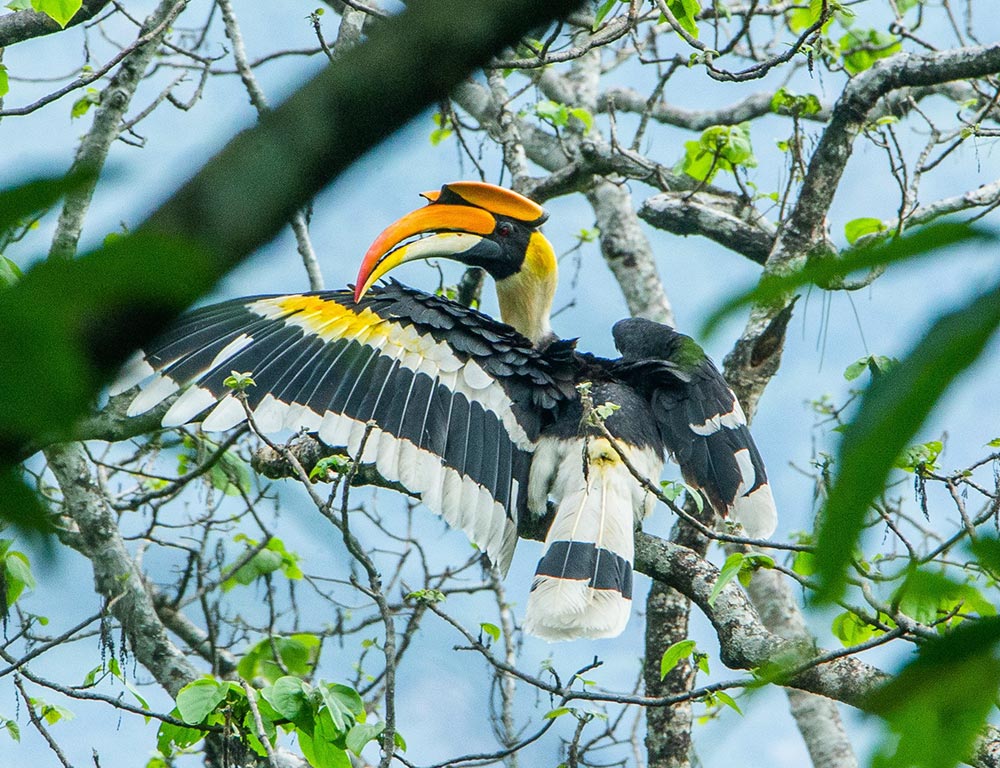
The great hornbill is one of the largest members of the hornbill family and is found in the Indian subcontinent and Southeast Asia. It has several common names, such as the concave-casqued hornbill, great Indian hornbill, or great pied hornbill.
This majestic bird is mainly a frugivore, meaning that it mainly eats fruits. However, it also preys on small mammals, reptiles, and other birds.
Its diet consists of a variety of food such as figs, beetles, and small reptiles. Its unique appearance sets it apart from other birds. It has a long tail and a large, curved bill with a casque on top.
The casque is a hollow structure on the bill that is believed to be used for amplifying its call. Its body is largely black with white patches on its wings, tail, and belly. The great hornbill is an important part of its local ecosystem.
It helps disperse seeds by eating the fruit and excreting the seeds elsewhere, helping to re-plant trees and vegetation.
It also plays the role of a predator, controlling the population of small mammals, reptiles, and other birds. The great hornbill is an iconic species in its range and is listed as vulnerable due to deforestation and hunting.
It is widely celebrated in art and literature and is an important part of local cultures. Conservation efforts are currently underway to protect this magnificent species.
| Kingdom | Animalia |
| Phylum | Chordata |
| Class | Aves |
| Order | Bucerotiformes |
| Family | Bucerotidae |
| Genus | Buceros |
| Species | B. bicornis |
4. Brown-Winged Kingfisher
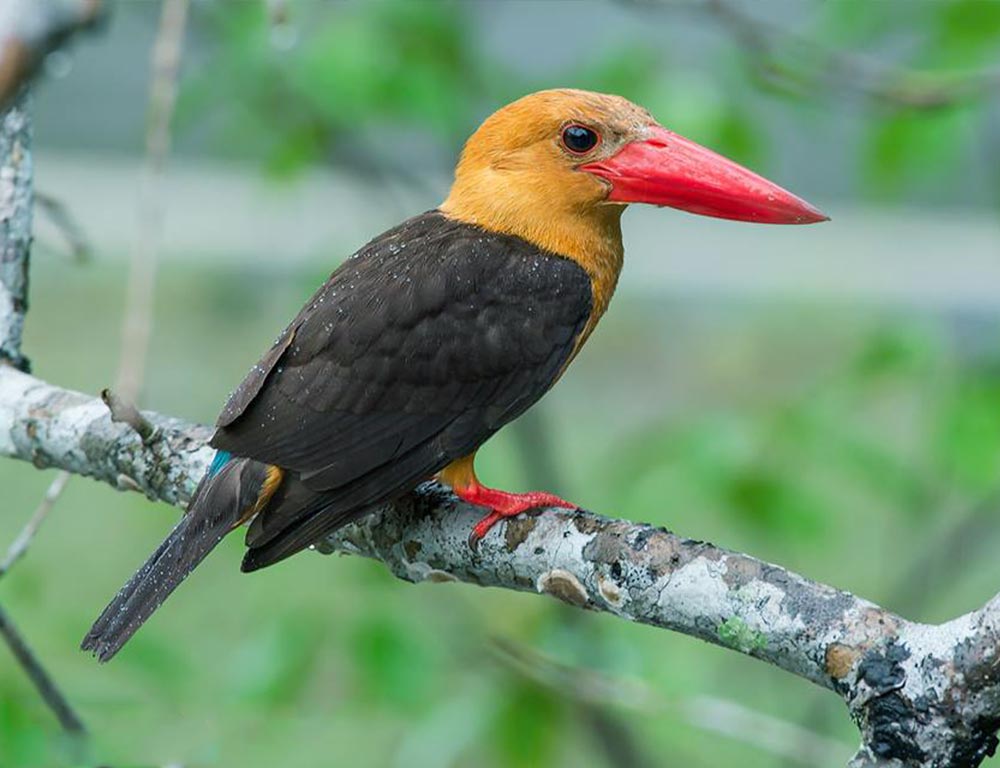
The Brown-winged Kingfisher is a species of bird that belongs to the subfamily Halcyoninae. This species is found along the northeast and eastern coasts of the Bay of Bengal, which includes countries such as Bangladesh, India, Malaysia, Myanmar and Thailand.
This species is known for its brown wings, which are very distinctive and can help to identify the species. It is also known for its beautiful plumage, which ranges from yellow to orange and brown.
The bird is generally found in forests, wetlands and coastal areas where it can feed on insects, fish and other small animals.
The Brown-winged Kingfisher is an important species as it is an indicator of the health of the environment, as it is sensitive to disturbances in its habitat.
Therefore, it is important to protect its habitat in order to maintain a healthy population of this species.
| Kingdom | Animalia |
| Phylum | Chordata |
| Class | Aves |
| Order | Coraciiformes |
| Family | Alcedinidae |
| Genus | Pelargopsis |
| Species | P. amauroptera |
5. Mangrove Pitta
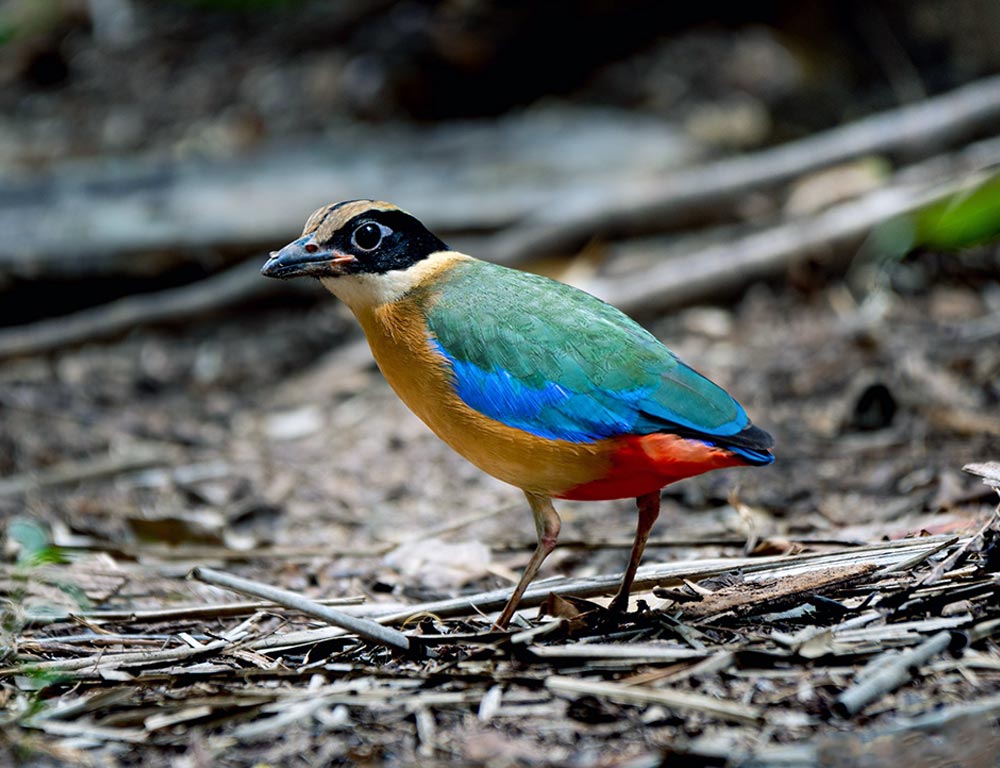
The Mangrove Pitta is a species of bird belonging to the Pittidae family. It is native to the eastern part of the Indian Subcontinent and to western Southeast Asia. It is part of superspecies, which includes the Indian Pitta, the Fairy Pitta, and the Blue-Winged Pitta.
This means that it is closely related to these other species. However, the Mangrove Pitta does not have any recognized subspecies.
This means that it is considered to be a distinct species in its own right, and is not related to any other species in the same way that it is to the other members of its superspecies.
| Kingdom | Animalia |
| Phylum | Chordata |
| Class | Aves |
| Order | Passeriformes |
| Family | Pittidae |
| Genus | Pitta |
| Species | P. megarhyncha |
6. Black-Crested Bulbul
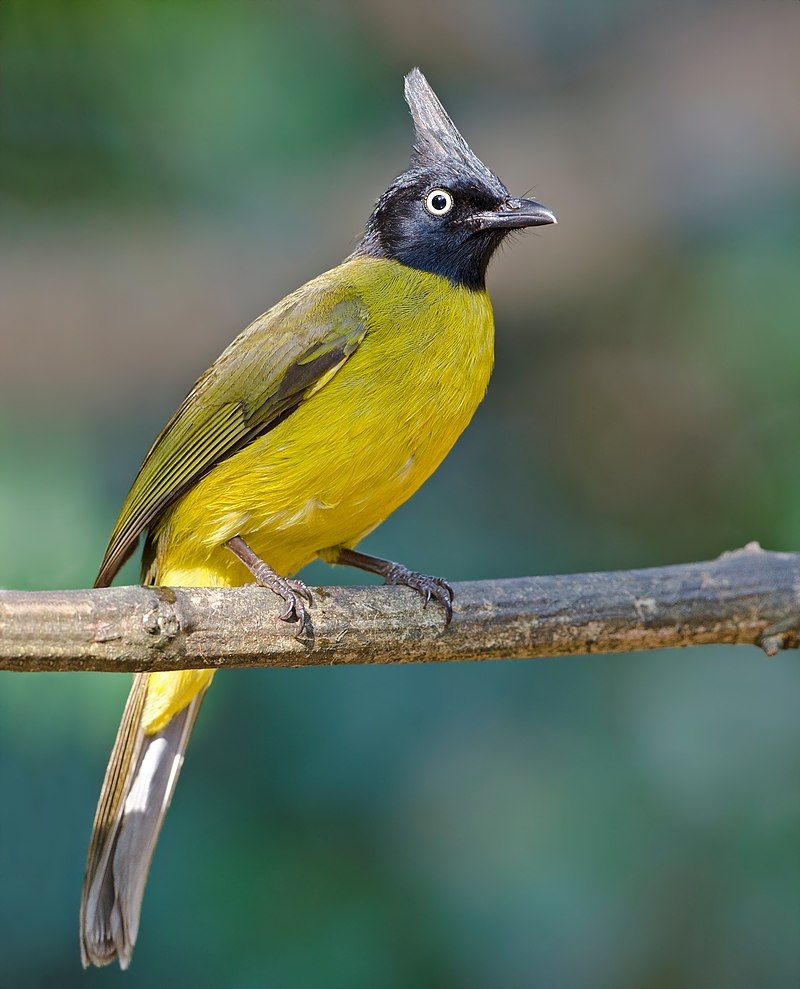
The black-crested bulbul is a species of passerine bird found in the bulbul family. It is native to the Indian subcontinent and southeast Asia, where it is found in tropical and subtropical climates.
The black-crested bulbul is a medium-sized bird, typically measuring between 20-25 centimeters in length with a wingspan of up to 33 centimeters. Its plumage is mostly black with a white throat and breast, and a distinctive black crest atop its head.
The black-crested bulbul is often found in forests and woodlands as well as urban parks and gardens. It feeds mostly on fruits, berries, and insects, foraging in the undergrowth and trees.
This species is generally non-migratory, though some populations may migrate short distances in response to seasonal food availability. The black-crested bulbul is a social species, often seen in small groups of up to 10 individuals.
Breeding pairs defend a small territory, where they build their nest in dense foliage. The female typically lays two to four eggs in the nest and the pair will care for the young until they fledge.
The black-crested bulbul is a common species with a wide range and is therefore not considered threatened.
| Kingdom | Animalia |
| Phylum | Chordata |
| Class | Aves |
| Order | Passeriformes |
| Family | Pycnonotidae |
| Genus | Rubigula |
| Species | R. flaviventris |
7. Red-Wattled Lapwing
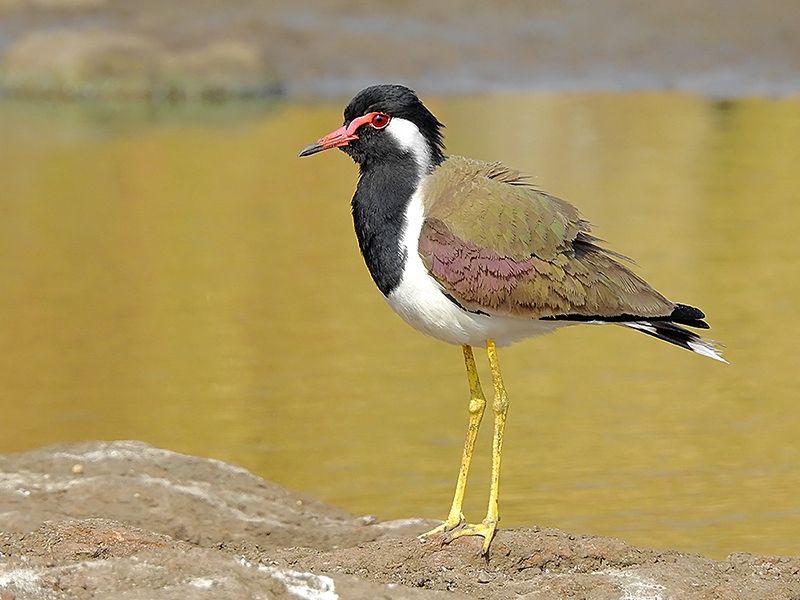
The red-wattled lapwing is a type of bird found in Asia. It is a member of the Charadriidae family, which includes lapwings and plovers. Lapwings are wading birds, meaning they live and feed on the ground.
They are not able to perch, which is the ability to rest or sleep on a branch or other elevated surface. Instead, they make their homes on the ground. Lapwings are considered to be large birds, and the red-wattled lapwing is no exception.
They have a red wattle near their eyes which gives them their name. This distinctive feature makes them easy to identify among other birds.
| Kingdom | Animalia |
| Phylum | Chordata |
| Class | Aves |
| Order | Charadriiformes |
| Family | Charadriidae |
| Genus | Vanellus |
| Species | V. indicus |
8. Olive-Backed Sunbird
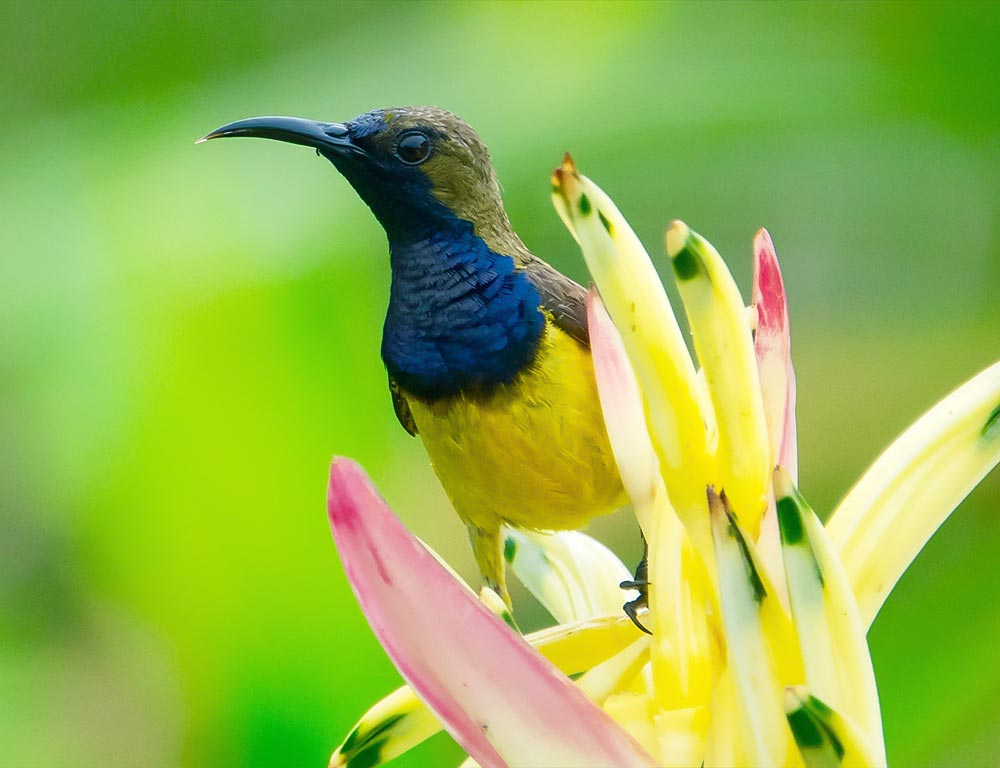
The olive-backed sunbird is a beautiful species of sunbird that is found in regions ranging from Southern Asia to Australia. It is also known as the yellow-bellied sunbird due to its bright yellow underside.
It is a small bird, measuring around 12 centimeters in length, with a slender body and long curved beak. The male sunbird has a striking olive-green back and head while the female is mostly duller in color, but still has some yellow and olive hues.
They are nectar feeders and mainly feed on the nectar of flowers while they search for insects among the foliage. They have a distinctive, high-pitched call that helps them communicate with each other while they forage for food.
They are usually found in pairs or small flocks and prefer to inhabit forests and wooded areas. The olive-backed sunbird is an important pollinator of many plant species, and in some areas, it is considered a symbol of good luck.
| Kingdom | Animalia |
| Phylum | Chordata |
| Class | Aves |
| Order | Passeriformes |
| Family | Nectariniidae |
| Genus | Cinnyris |
| Species | C. jugularis |
9. Black-and-Red Broadbill
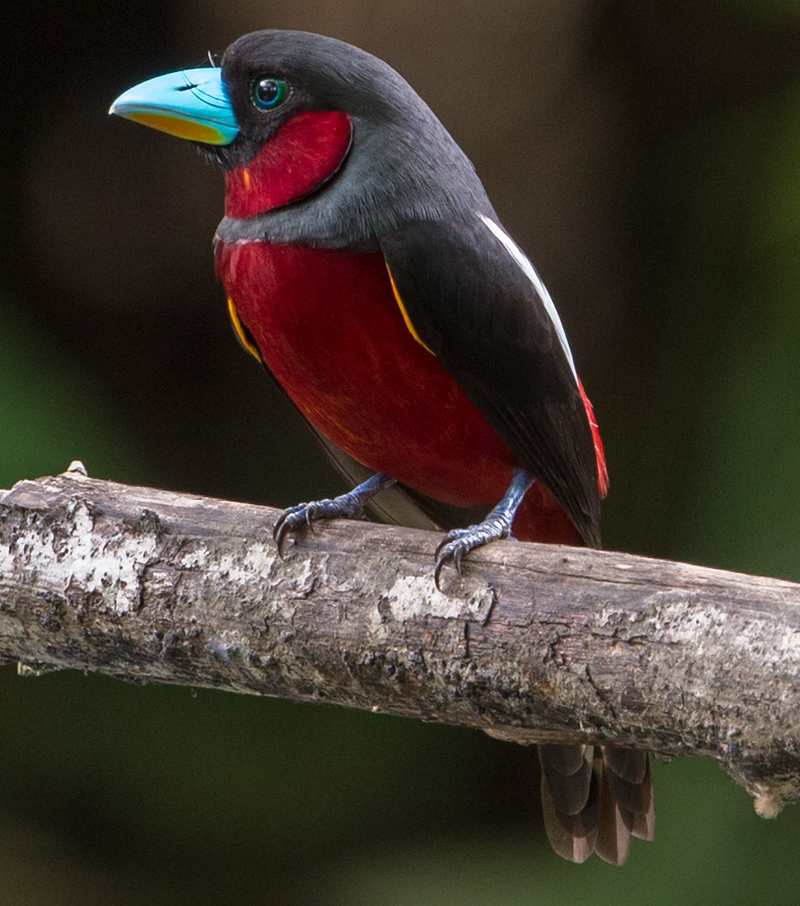
The black-and-red broadbill is an impressive bird that stands out from the crowd due to its unique coloration. It belongs to the typical broadbill family, Eurylaimidae, and is the only species in the genus Cymbirhynchus.
This large bird has a maroon underbelly, black upperparts, and a white maroon neckband. Its wings are marked with white bars, making it easy to spot in the wild.
The black-and-red broadbill is a relatively discovery, first being recorded in 2003, and its exact distribution is still being studied. This bird is found in tropical forests of Southeast Asia and parts of Indonesia and feeds on fruit and small insects.
It is an active bird, often seen flying between trees and branches in search of food. Its distinct coloration makes it a wonderful sight to see, and it is sure to be a valuable addition to any bird watcher’s list.
| Kingdom | Animalia |
| Phylum | Chordata |
| Class | Aves |
| Order | Passeriformes |
| Family | Eurylaimidae |
| Genus | Cymbirhynchus |
| Species | C. macrorhynchos |
10. Chinese Pond Heron
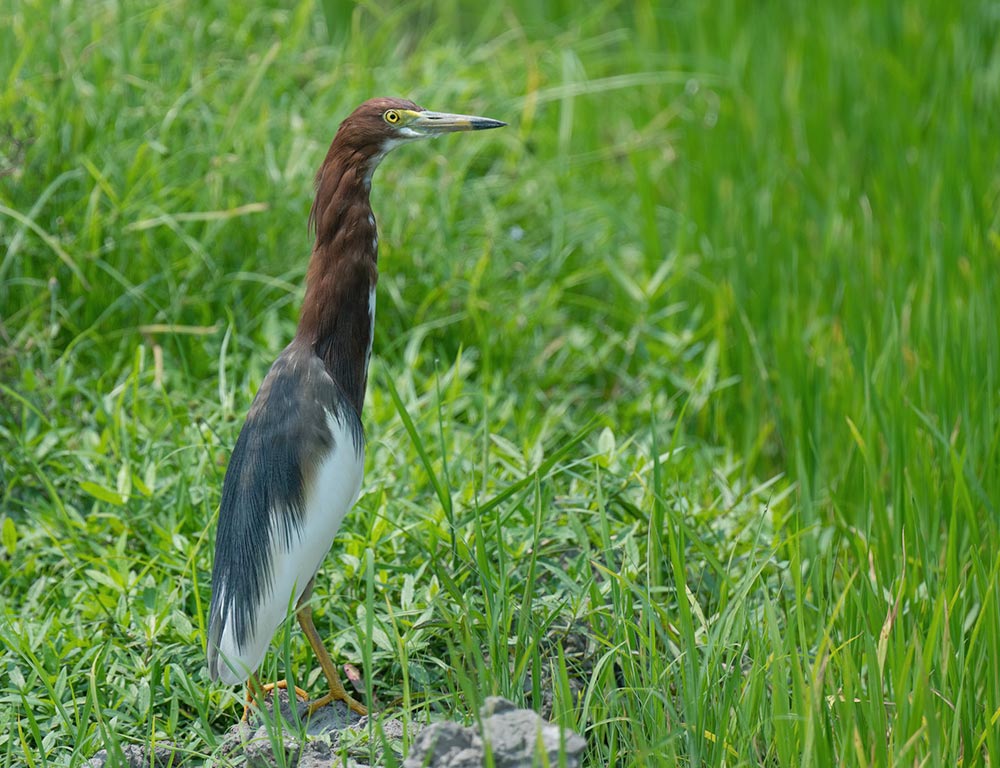
The Chinese pond heron is a species of bird in the heron family, found in East Asia. They are one of six species of birds identified as “pond herons”.
This species is geographically close to two other species of herons; the Indian pond heron to the west and the Javan pond heron to the south.
These three species are believed to be closely related and form a superspecies, which means that they are all closely related and share many of the same characteristics. The Chinese pond heron is a medium-sized bird with a body length of around 47-51 cm.
It has a white head, neck, and breast, with a grey back and wings. The lower half of the bird is grey-brown, and its bill is yellow with a black tip. They feed mainly on small fish, frogs, insects, and aquatic invertebrates.
Chinese pond herons are found in wetland habitats such as marshes, ponds, lakes, streams, and rice paddies. They are generally found in lowland areas and prefer to stay in areas with thick vegetation. They are non-migratory and spend their entire lives in the same general area.
The Chinese pond heron is not considered endangered, although its population is decreasing due to habitat destruction. The species is protected in some areas, and conservation efforts are being made to protect its remaining habitat.
| Kingdom | Animalia |
| Phylum | Chordata |
| Class | Aves |
| Order | Pelecaniformes |
| Family | Ardeidae |
| Genus | Ardeola |
| Species | A. bacchus |
11. Orange-Bellied Flowerpecker
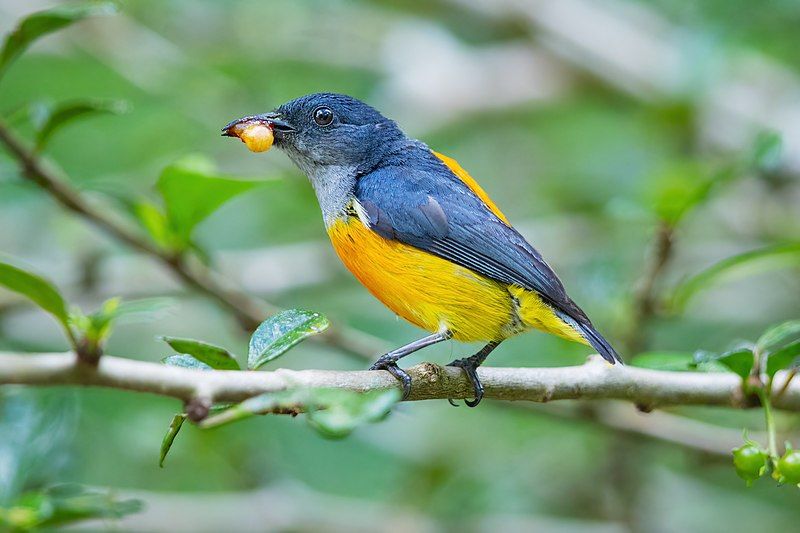
The orange-bellied flowerpecker is a species of bird belonging to the family Dicaeidae. It is native to several countries in South and Southeast Asia, including Bangladesh, Brunei, India, Indonesia, Malaysia, Myanmar, the Philippines, Singapore, and Thailand.
This small bird is characterized by its bright orange belly, which is bordered by a black-and-white pattern. Its head and wings are mostly black, and its back is gray with a white patch.
The orange-bellied flowerpecker is a nectar-feeder, meaning it mostly feeds on the sugary nectar from flowers. It is also known to feed on insects and other small animals.
The orange-bellied flowerpecker primarily inhabits the tropical rainforests of the countries it is native to. It is a social bird, often seen in small flocks, and it has a unique call that is often heard in these flocks.
Since the bird is mainly found in these densely populated areas, its population is threatened by human activities like deforestation and urbanization. As such, the International Union for Conservation of Nature (IUCN) has classified it as a species of ‘Least Concern’.
Conservation efforts are needed to protect the orange-bellied flowerpecker and its habitat, so that future generations may continue to enjoy this beautiful and unique species.
| Kingdom | Animalia |
| Phylum | Chordata |
| Class | Aves |
| Order | Passeriformes |
| Family | Dicaeidae |
| Genus | Dicaeum |
| Species | D. trigonostigma |
12. Bushy-Crested Hornbill
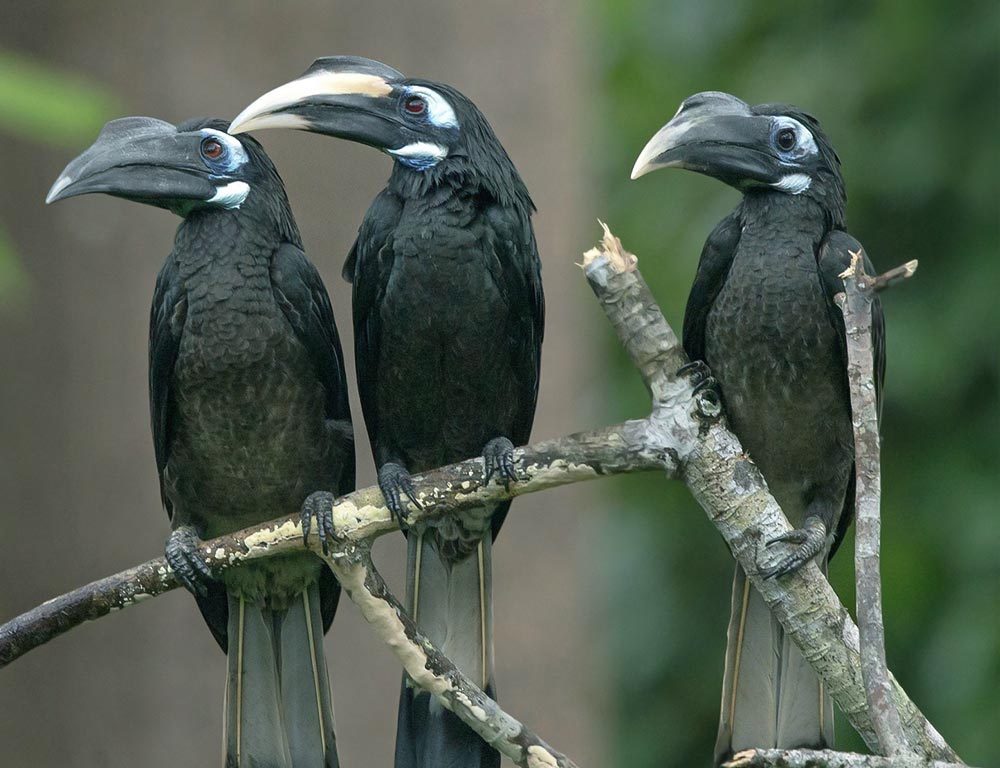
The bushy-crested hornbill is a species of bird that belongs to the hornbill family. It can be found in five different countries: Brunei, Indonesia, Malaysia, Myanmar, and Thailand. It thrives in subtropical and tropical lowland forests that are moist and lush.
These forests are characterized by dense foliage and can be quite humid in areas that are near the ocean. The bushy-crested hornbill is a large bird that is easily recognizable due to its distinctive crest.
Its beak is curved downwards and its coloring is mostly black with a white belly. It is an omnivore, meaning that it eats both plants and animals, including fruits, insects, and small vertebrates.
The bushy-crested hornbill is an important part of its natural habitat and many conservation efforts have been put in place to protect the species.
| Kingdom | Animalia |
| Phylum | Chordata |
| Class | Aves |
| Order | Bucerotiformes |
| Family | Bucerotidae |
| Genus | Anorrhinus |
| Species | A. galeritus |
13. Brahminy Kite
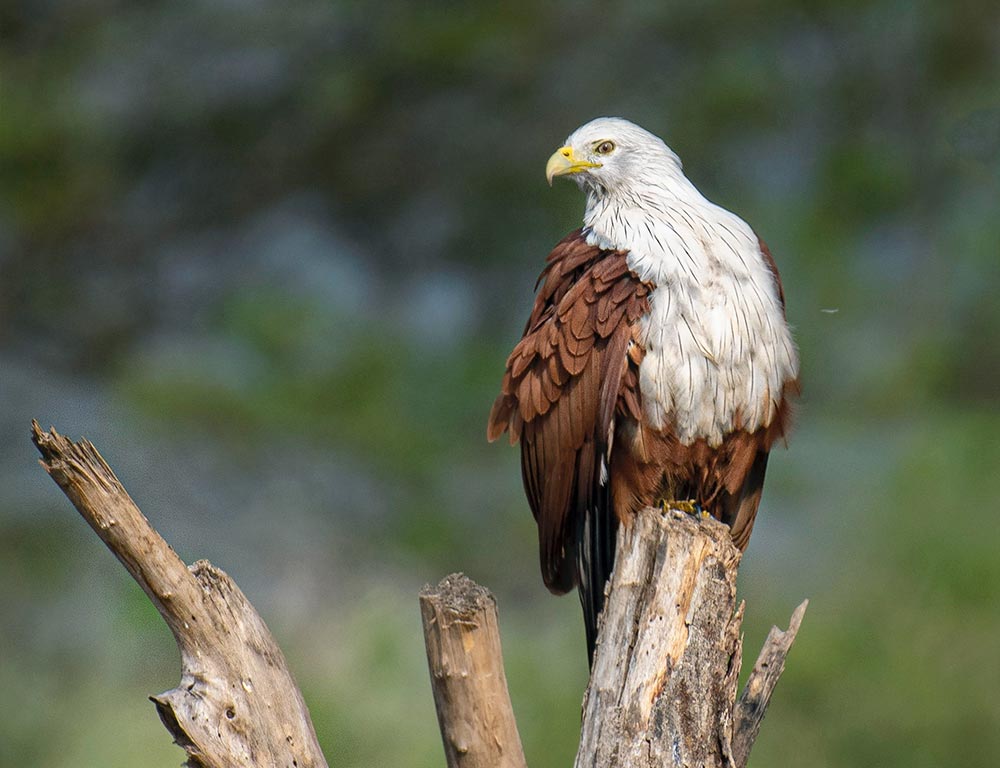
The Brahminy Kite is a bird of prey that belongs to the Accipitridae family, which is a large group of diurnal raptors. These raptors include eagles, buzzards, and harriers. The Brahminy Kite is found throughout the Indian subcontinent, Southeast Asia, and Australia.
In Australia, it is commonly referred to as the Red-Backed Sea Eagle. It is a medium-sized bird, with a wingspan of up to 4 feet. They usually hunt in open areas, such as near rivers, lakes, and coastal regions.
They feed mainly on fish, but also small mammals, reptiles, and insects. They have a white head and breast, and a distinctive reddish-brown back and wings. It is a powerful and graceful flier and is often seen soaring high in the sky.
| Kingdom | Animalia |
| Phylum | Chordata |
| Class | Aves |
| Order | Accipitriformes |
| Family | Accipitridae |
| Genus | Haliastur |
| Species | H. indus |
14. Ruddy Kingfisher
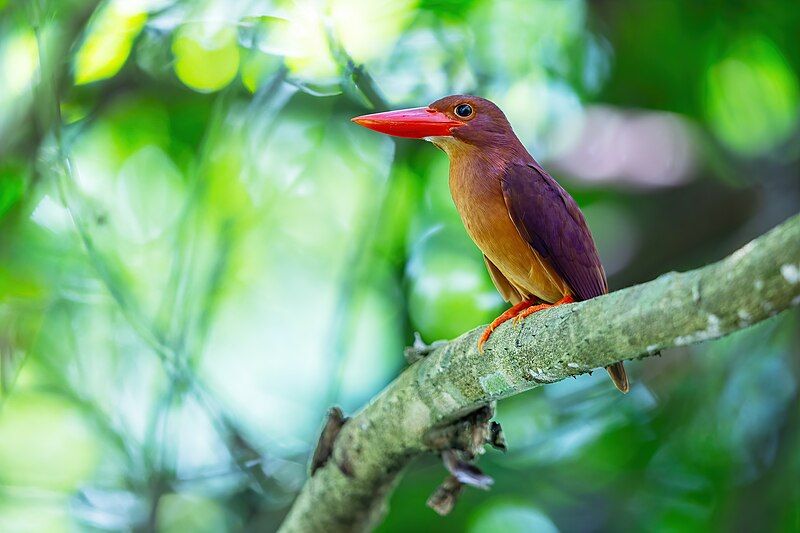
The ruddy kingfisher is a species of tree kingfisher belonging to the Halcyonidae family. It is a medium-sized bird, measuring up to 28 cm in length, and is easily identifiable due to its striking reddish-brown color.
This species is widely distributed throughout East and Southeast Asia, with populations found in countries such as India, China, Japan, Indonesia, and the Philippines.
The ruddy kingfisher is an arboreal species, meaning it primarily lives in trees and is usually found near rivers, streams, or other bodies of water.
It feeds on a variety of small prey such as insects, small fish, frogs, and lizards, which it catches with its large, distinctive beak. The ruddy kingfisher is a timid bird and generally avoids human contact.
The ruddy kingfisher is an important species in its native environment, as it helps to maintain the balance of the aquatic and terrestrial ecosystems by controlling the populations of its prey.
Unfortunately, the ruddy kingfisher is threatened by deforestation and water pollution, and some populations are declining due to these threats. As a result, the species is listed as Near Threatened on the IUCN Red List of threatened species.
| Kingdom | Animalia |
| Phylum | Chordata |
| Class | Aves |
| Order | Coraciiformes |
| Family | Alcedinidae |
| Genus | Halcyon |
| Species | H. coromanda |
15. Spotted Dove
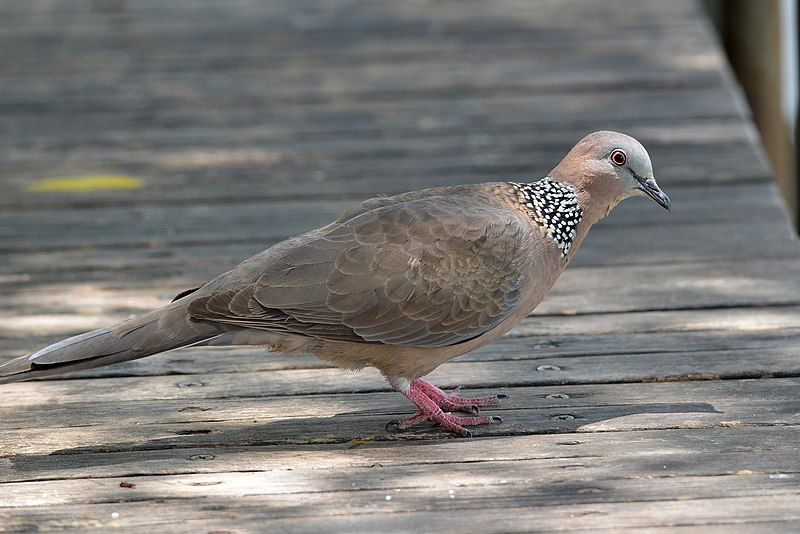
The spotted dove is a type of small pigeon native to the Indian subcontinent and Southeast Asia. It is characterized by its long tail and is a fairly common breeding bird throughout its natural range.
In recent years, the spotted dove has been introduced to many other parts of the world, and there are now numerous populations of them living in the wild in these places.
This is likely due to the bird’s adaptability and its ability to thrive in a variety of different environments. The spotted dove is an important species in many parts of the world, both as a wild bird and as a popular pet.
Its presence helps to maintain healthy ecosystems, while also providing people with an interesting and beautiful bird to observe.
| Kingdom | Animalia |
| Phylum | Chordata |
| Class | Aves |
| Order | Columbiformes |
| Family | Columbidae |
| Genus | Spilopelia |
| Species | S. chinensis |
16. Asian Brown Flycatcher
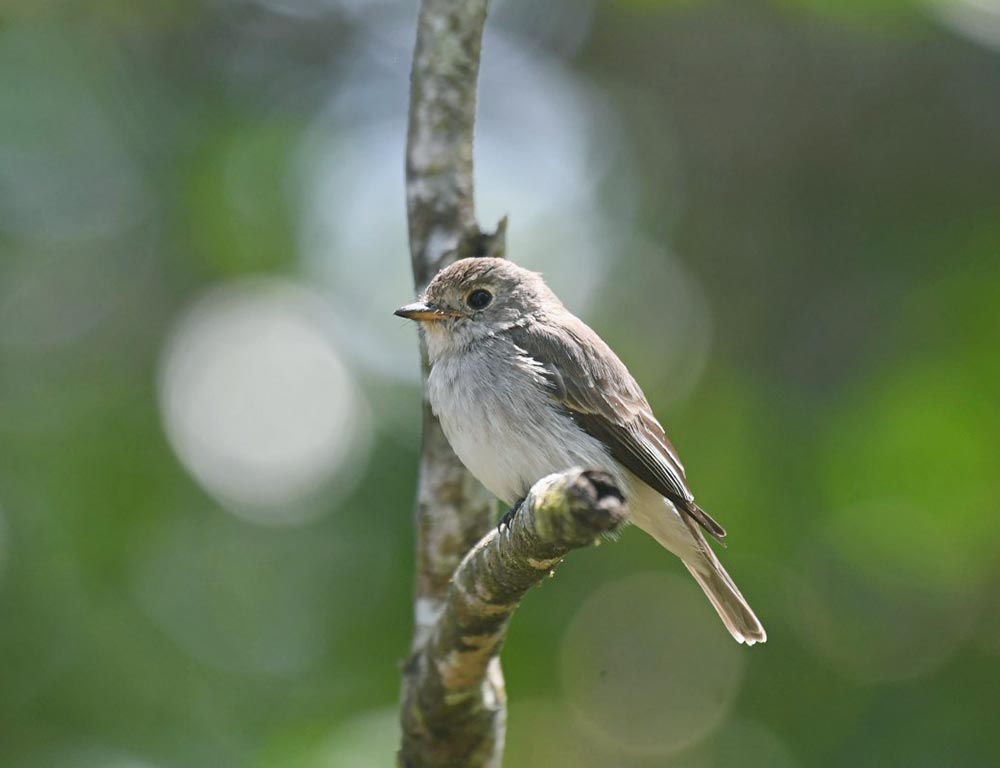
The Asian brown flycatcher is a small passerine bird in the flycatcher family Muscicapidae, which is derived from two Latin words, musca (meaning fly) and capere (meaning to catch).
This bird is found in a region of south-eastern Siberia known as Dauria, which is named after a local nomadic tribe. This bird is known for its impressive ability to catch flies mid-air, and it is often seen fluttering among the trees and bushes in search of its prey.
Its small size and brownish-gray feathers make it easy to blend into its surroundings, which helps it to remain hidden from predators.
The Asian brown flycatcher is an important part of the local ecology, as it helps to keep insect populations in check and serves as a food source for other animals.
| Kingdom | Animalia |
| Phylum | Chordata |
| Class | Aves |
| Order | Passeriformes |
| Family | Muscicapidae |
| Genus | Muscicapa |
| Species | M. dauurica |
17. Javan Banded Pitta
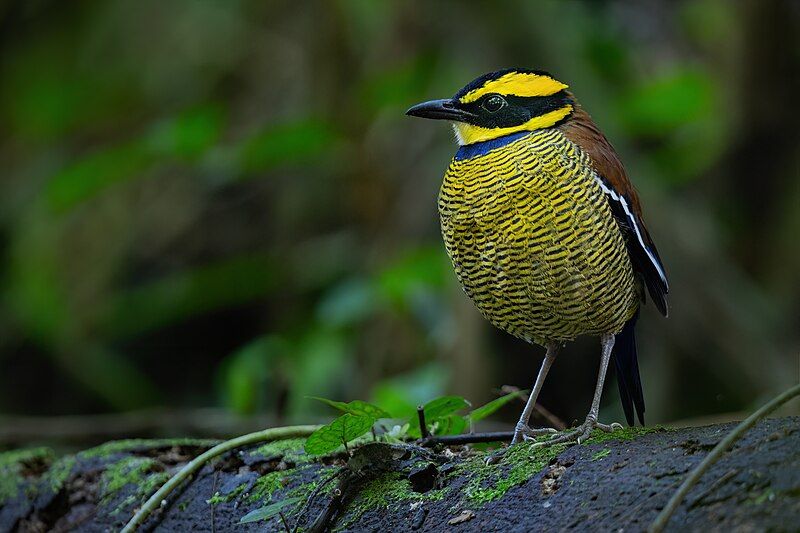
The Javan Banded Pitta is a species of bird in the family Pittidae, which is found in the islands of Java and Bali.
It is closely related to the Bornean and Malayan Banded Pittas, and until recently, all three species were considered the same species and were referred to collectively as the Banded Pitta.
This species has a unique set of features that set it apart from the other two species, making it a distinct species in its own right. The Javan Banded Pitta is usually greyish-brown in colour, with a distinctive white band along its back.
It also has a reddish-brown tail and a yellowish bill. It prefers to inhabit moist lowland forests with dense vegetation and is known to feed on insects, snails, and other small creatures.
| Kingdom | Animalia |
| Phylum | Chordata |
| Class | Aves |
| Order | Passeriformes |
| Family | Pittidae |
| Genus | Hydrornis |
| Species | H. guajanus |
18. White-Throated Kingfisher
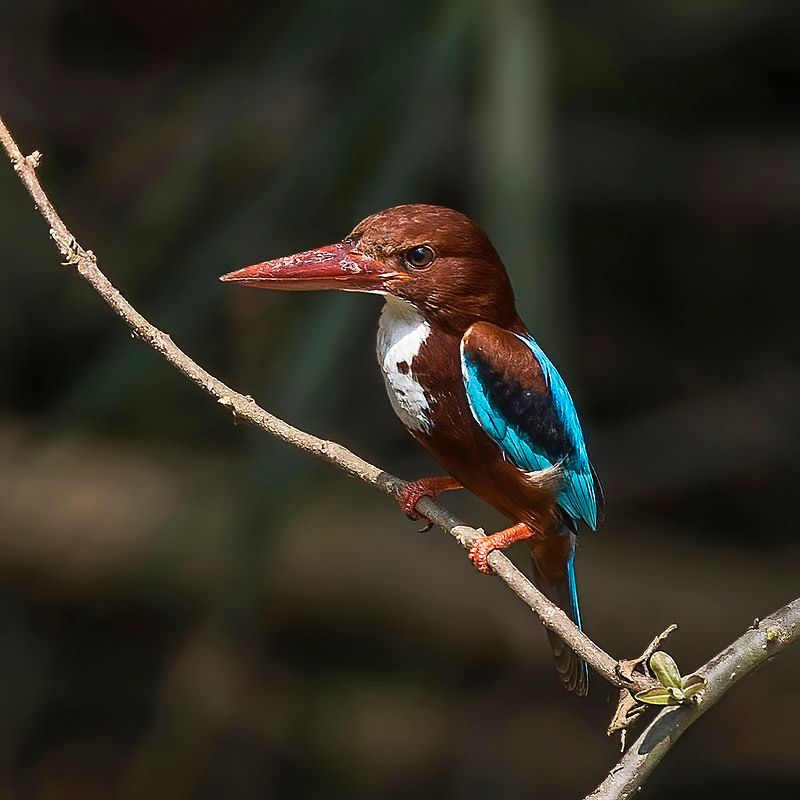
The white-throated kingfisher, also known as the white-breasted kingfisher, is a species of tree kingfisher widespread in Asia. It can be found from the Sinai region in the west, through the Indian subcontinent, and to China and Indonesia in the east.
The white-throated kingfisher generally resides in these areas, though some populations may migrate over short distances. This species of kingfisher is easily recognized by its distinctive white throat, which stands out against its blue back, wings, and tail feathers.
The underparts and head are also typically white, with a black eye stripe. Additionally, there are two black bands on the wings, and the bill is black, long, and pointed.
The white-throated kingfisher is usually found in open woodlands, dry scrub, and cultivation, where it perches on trees and wires, waiting for prey.
The white-throated kingfisher is an opportunistic hunter, and its diet consists of a variety of small animals, such as insects, amphibians, reptiles, and small fish. It is usually seen alone or in pairs, and is a vocal species, with a loud, rattling call.
During the breeding season, this kingfisher may be territorial and will defend its nesting area. The nest is usually a burrow dug into a riverbank, and the pair will construct a chamber at the end of the tunnel.
The white-throated kingfisher is an important species in many Asian countries, and it is a popular subject of art and culture.
| Kingdom | Animalia |
| Phylum | Chordata |
| Class | Aves |
| Order | Coraciiformes |
| Family | Alcedinidae |
| Genus | Halcyon |
| Species | H. smyrnensis |
19. Chestnut-Bellied Malkoha
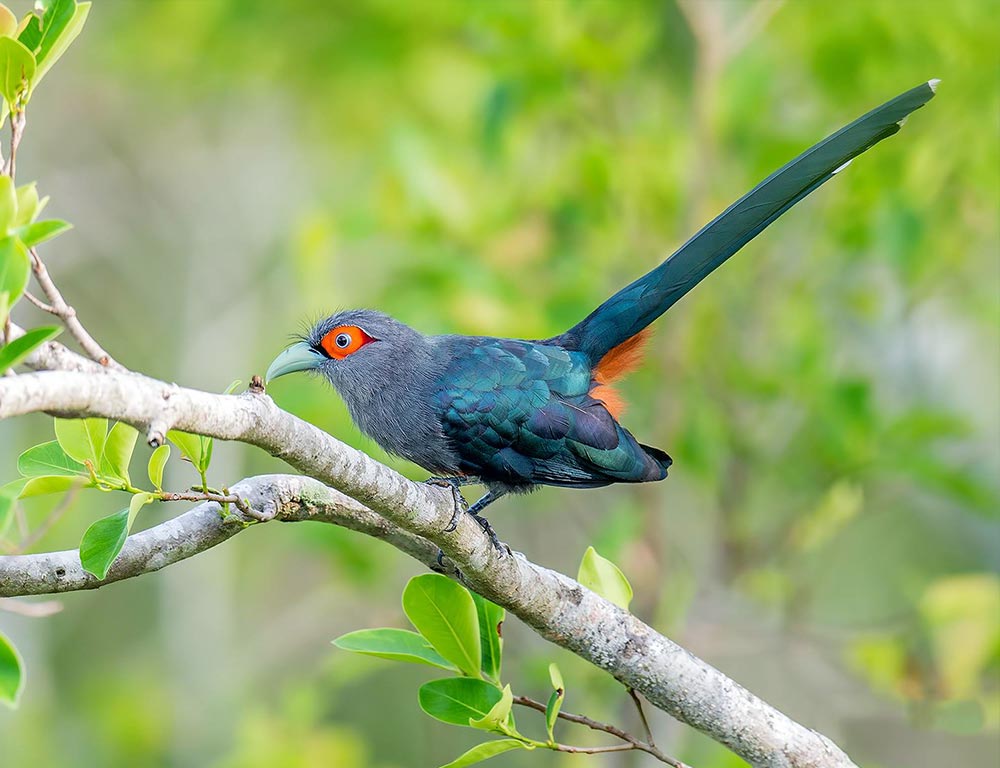
The Chestnut-bellied Malkoha is a species of cuckoo, belonging to the family Cuculidae. It is native to several countries in Southeast Asia, including Brunei, Indonesia, Malaysia, Myanmar, Singapore, and Thailand.
This species lives in a variety of habitats, such as subtropical or tropical moist lowland forests, subtropical or tropical mangrove forests, and subtropical or tropical swamplands.
The Chestnut-bellied Malkoha is a medium-sized cuckoo, with a body length of approximately 28 cm.
It has a black crown, a greyish-brown back, and a white throat. The chestnut color on its belly is the most distinct feature of this species.
Its wings are dark brown, and its tail is black with white tips. The Chestnut-bellied Malkoha is an omnivorous species, with a diet consisting of small insects, fruits, and seeds. They are usually seen foraging in the understory of the forest, often in pairs or small groups.
They are known to have a loud and distinctive call, which is a repeated “kak-kak-kak” sound. The Chestnut-bellied Malkoha is a species of least concern, due to its wide distribution and population size. However, its population is declining due to habitat destruction.
Since it is dependent on a variety of habitats, conservation efforts should be made to ensure the long-term survival of this species.
| Kingdom | Animalia |
| Phylum | Chordata |
| Class | Aves |
| Order | Cuculiformes |
| Family | Cuculidae |
| Genus | Phaenicophaeus |
| Species | P. sumatranus |
20. Brown-Throated Sunbird
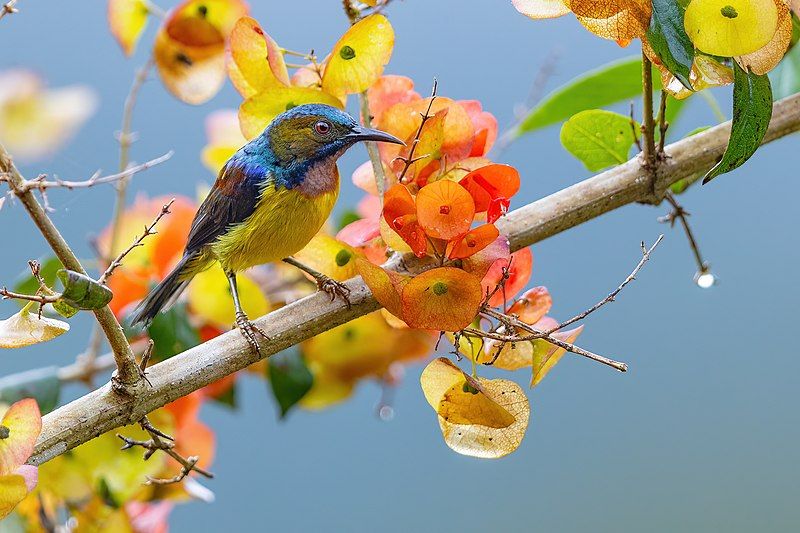
The brown-throated sunbird, also known as the plain-throated sunbird, is a species of bird belonging to the family Nectariniidae. It inhabits a wide range of semi-open habitats ranging from Myanmar to the Lesser Sundas and the west Philippines in Southeast Asia.
This species of sunbird is typically found in areas of scrub, cultivation, open grassland, secondary growth, and gardens, preferring habitats with low levels of disturbance. The brown-throated sunbird is a small bird, typically measuring between 11 and 13cm in length.
It is a plump bird, with a short neck and a rounded head. The upper parts are olive-brown with a bright yellow throat, breast, and neck. The underparts are yellow and the wings are black with white edges.
The tail is black with white tips. The diet of the brown-throated sunbird consists of nectar, insects, and small fruits. It mainly forages in the canopy and mid-story of trees, but also visits flowers in the understory.
They are often seen in pairs or small groups and are active and vocal throughout the day. The brown-throated sunbird is a common species that is not threatened with extinction.
However, its population size is thought to be declining due to the destruction of its habitats, fragmentation, and degradation due to human activity.
| Kingdom | Animalia |
| Phylum | Chordata |
| Class | Aves |
| Order | Passeriformes |
| Family | Nectariniidae |
| Genus | Anthreptes |
| Species | A. malacensis |
21. Lesser Fish Eagle
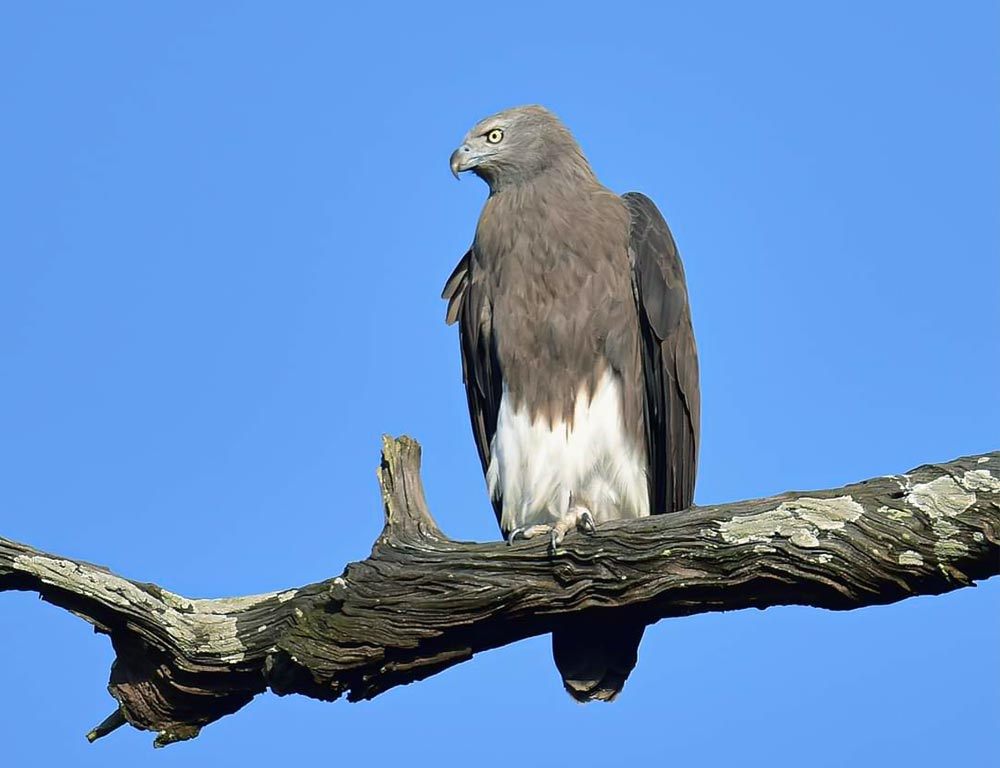
The lesser fish eagle (Icthyophaga), also known as the Indian fish eagle, is a species of raptor found in the Indian subcontinent and parts of Southeast Asia. They inhabit the foothills of the Himalayas, as well as lowland areas with access to bodies of water.
These birds are apex predators, typically dwelling in wetland areas and preying on fish, amphibians, reptiles, and other small animals. The lesser fish eagle is an impressive sight with its dark brown body, white head, and yellow beak.
It has a wingspan of up to 5.9 ft (1.8 m) and is known to soar above rivers and lakes to spot its prey. The lesser fish eagle is an endangered species, mostly due to their dependence on wetlands and the destruction of these habitats.
Preservation of their natural habitats is crucial to the survival of this species.
| Kingdom | Animalia |
| Phylum | Chordata |
| Class | Aves |
| Order | Accipitriformes |
| Family | Accipitridae |
| Genus | Icthyophaga |
| Species | I. humilis |
22. Blue-Winged Pitta
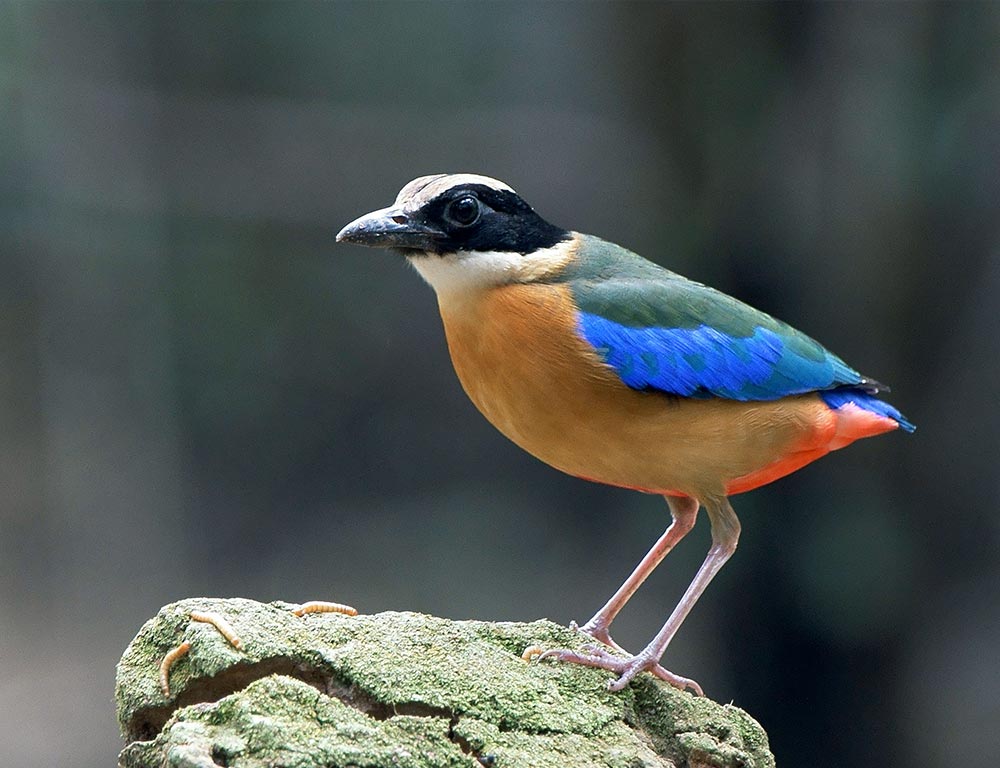
The blue-winged pitta is a type of passerine bird belonging to the family Pittidae. This type of bird is part of a superspecies which includes three additional pittas: the Indian pitta, the fairy pitta, and the mangrove pitta.
This means that all four species of pittas are closely related, and share many similar characteristics. The blue-winged pitta is found in East and Southeast Asia and can be identified by its blue wings and tail.
They have a black crown and white throat, as well as a brown back and white underparts. The pitta is known for its distinctive call, which is a loud “boink” sound. The Indian pitta is found in India, Sri Lanka, and parts of Bangladesh.
It is very similar in appearance to the blue-winged pitta, with dark green and blue wings and tail. The Indian pitta is also known for its loud call, which is a loud “kuk-kuk” sound. The fairy pitta is found in Japan and Taiwan.
It is slightly smaller than the other two species and has bright blue wings and a tail. Its call is a high-pitched “tseep” sound. The mangrove pitta is the rarest of the four species and is found in mangrove forests in Indonesia and Malaysia.
It has a black crown and underparts, and a white throat and rump. Its call is a soft “kik-kik” sound. All four species of pittas have a variety of unique characteristics and behaviors that make them interesting to observe.
They are all active during the day and feed on a variety of insects, fruits, and small animals. They are also known to migrate seasonally, and can often be seen in large flocks during migration.
| Kingdom | Animalia |
| Phylum | Chordata |
| Class | Aves |
| Order | Passeriformes |
| Family | Pittidae |
| Genus | Pitta |
| Species | P. moluccensis |
23. Blue-Eared Kingfisher
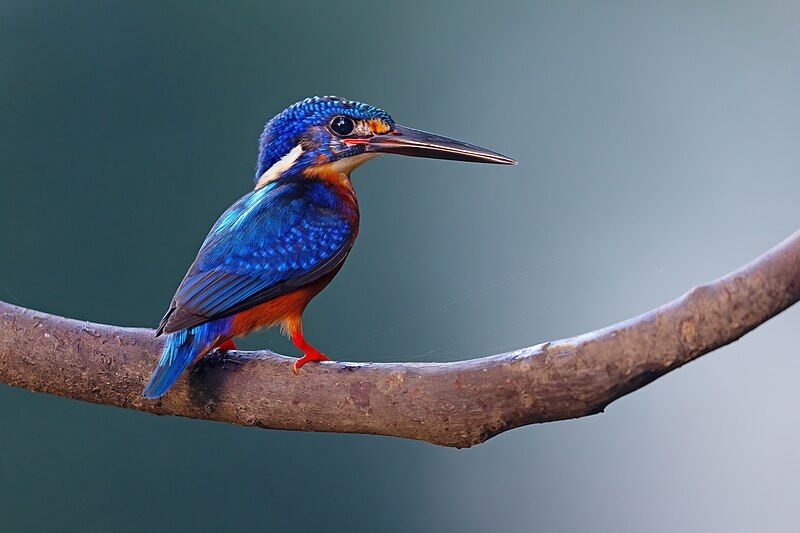
The blue-eared kingfisher is a species of bird that is found in Asia, in particular the Indian subcontinent and Southeast Asia. This species is considered to be quite rare and is often found in dense shaded forests, where it can hunt in small streams.
The blue-eared kingfisher is a medium-sized bird, measuring around 23 cm in length. Its plumage is mainly blue, except its bright orange bill and legs.
The bird’s most distinctive feature is its bright blue-green ears, which stand out against the other colors. This species is known for its active hunting behavior, which involves searching for small insects and fish in streams and pools.
The blue-eared kingfisher is a solitary species and is usually found alone or in pairs. It is mainly active during the day, but will sometimes hunt at night.
This species is thought to be in decline due to habitat destruction and disturbance, so conservation efforts are necessary to ensure its survival.
| Kingdom | Animalia |
| Phylum | Chordata |
| Class | Aves |
| Order | Coraciiformes |
| Family | Alcedinidae |
| Genus | Alcedo |
| Species | A. meninting |
24. Red-Bearded Bee-Eater
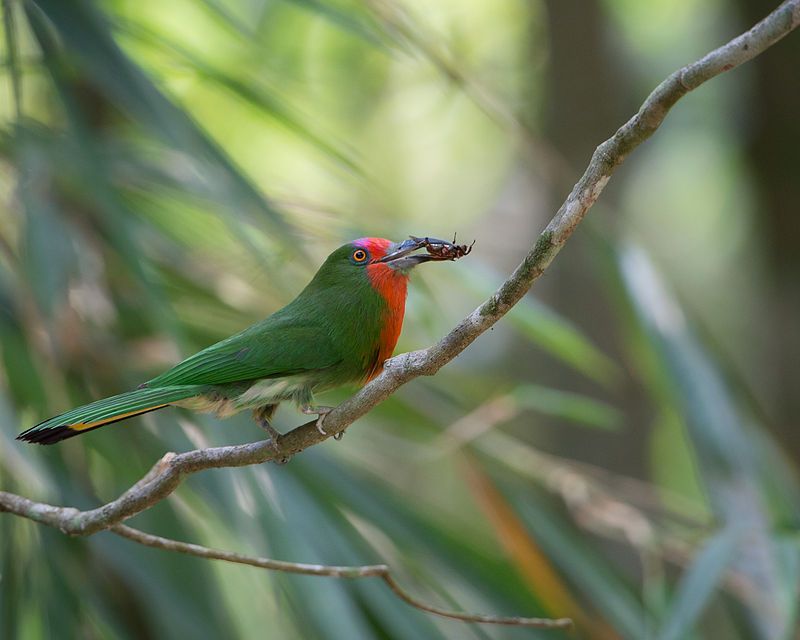
The red-bearded bee-eater is a large species of bee-eater found in some of the most beautiful parts of the world. This species of bee-eater can be found in southern Myanmar, the Thai-Malay Peninsula, Borneo, Sumatra, and nearby islands.
This bee-eater species prefers to nest in openings in patches of dense forest, rather than in the open. The density of the forest likely provides them with more protection from potential predators.
Additionally, the dense forest may also provide them with more food sources, such as a variety of insects. The red-bearded bee-eater has a few distinct characteristics that help to differentiate it from other bee-eaters.
It has a bright red beard that stands out against its otherwise duller feathers. Additionally, its beak is curved and long enough to help it to catch its insect prey.
This species of bee-eater is also known for its beautiful song, which is loud and melodious and can be heard from quite a distance. The red-bearded bee-eater is a fascinating species of bird that is found in some of the most beautiful parts of the world.
Its unique characteristics and song make it a joy to watch and listen to. It is important to protect this species and its habitat so that future generations can enjoy its presence in the wild.
| Kingdom | Animalia |
| Phylum | Chordata |
| Class | Aves |
| Order | Coraciiformes |
| Family | Meropidae |
| Genus | Nyctyornis |
| Species | N. amictus |
Conclusion
Birds in Phang Nga are incredibly diverse and abundant. With over 300 species of birds in the province, bird-watching in Phang Nga is a great way to explore the natural beauty and wildlife of the region.
From woodland birds to sea birds, the avian population of Phang Nga is a testament to the biodiversity of the province. This diversity and abundance of bird life make Phang Nga an ideal place to observe and appreciate some of nature’s most beautiful and fascinating creatures.